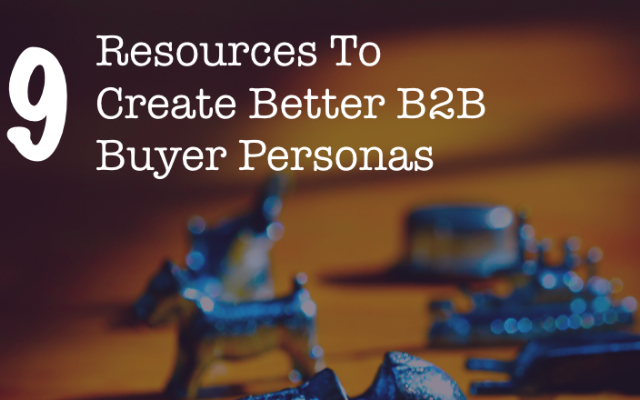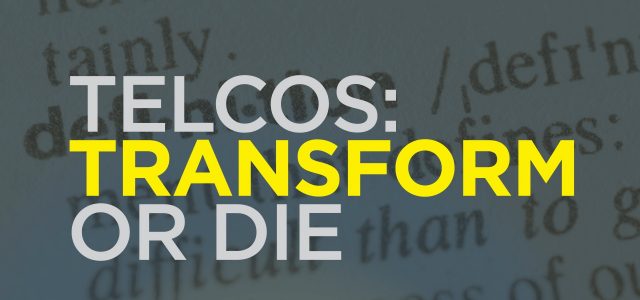According to Aberdeen Research, marketers who use buyer personas and map content to the Buyer Journey enjoy 73% higher conversions from response to marketing qualified lead. At this point, you know you need Buyer Personas. The search term has been gaining steam the last few years, peaking at a Google Trends Score of 100 (out of 100) in May of 2016.

The problem? Most B2B buyer personas are terrible. Sorry to say, but yours probably are, too.
Why is this?
Well, buyer personas were originally created in the early 80s by software developers so that they could theorize how different types of users would play with the interfaces they designed. Not radically different from how we use them today in a Marketing and Sales sense.
But also, pretty unscientific.
Today, with the rise of social media, content marketing, the evolution of SEO, and advanced marketing automation tactics, having accurate and documented buyer personas has become critical for marketers.
They’re necessary for developing an effective B2B content marketing strategy, building traction across your digital marketing channels, helping the Marketing team stay focused, and creating tight alignment between Marketing and Sales. Buyer Personas tie the whole Sales & Marketing Machine together.
Here are 9 resources for building better B2B Buyer Personas for your team:
- Current Customer Surveys: This is, by far, the easiest way to build out really strong buyer personas. Send out a survey to a segment of your email list that’s most engaged with your newsletter, your store, etc. Ensure that the survey covers off on how they came to be a customer, why they chose to become a customer, and what would ensure that they remain.
- Former Customer Surveys: These surveys will usually see lower response rates, naturally, but sometimes your former customers may surprise you. And when they do, you’ll get the real gems. How did you lose their business? Are they happy with the partner/vendor/supplier/software they chose instead? What would make them switch back?
- Lost Customer Interviews: With surveys, you may be looking at more straightforward intel, but when you set up interviews, this is where you can dig up some really great qualitative insights. And while a survey size of 1,000 may be small, an interview set of only 5 might be enough (depending on how many industries and segments you serve).
- Advocate Interviews: Naturally, if you’re interviewing your former customers, then you’ll want to also interview your absolute best customers. Find those customers who flew through the Buyer Journey and Sales Funnel; find the customers who purchase the most from you annually; the customers who have been with you the longest; the customers who refer you the most business. What makes them tick?
- Sales Manager Interviews: Yes, the Sales team probably knows what motivates your buyer as well as you do (probably better than you do). Set up time and sit down with your team’s most experienced AND least experienced sales reps. You’ll find that both will surprise you.
- Customer Support Interviews: These folks are a gold mine for pain points. Why are customers hard to track down? Why do they contact you? Why do they reschedule? What are they asking for? Your customer success team will be able to teach you a thing or two about your firm’s Loyalty Loop.
- Leadership Team Interviews: Your leadership team likely knows your buyer incredibly well. They might also be able to provide a few pearls of wisdom that may not have made it into the last iteration of your strategy documentation. This is also a great time to get alignment and buy-in on your new content marketing strategy or social marketing strategy – likely the reason that you’re re-evaluating buyer personas in the first place.
- Mining CRM Data: Your customer relationship management platform will be especially helpful with buyer persona segmentation. What are the most common demographics for our best buyers, or for our most frequently lost customers? Many times, your CRM will actually house recorded calls, notes from the Sales team, and other contextual gems that can be layered into your buyer personas.
- Mining Social Media Data: By far the least understood, and therefore most the infrequently or ineffectually used, is using social listening data to pull insights about your buyers. Using social listening and monitoring tools, which range from Free to Enterprise level, you can sort, filter, and comb through unprompted opinions, sentiment, and interactions between your customers, your social profiles, and your competitors. This is a must for generating accurate buyer personas today.
Buyer personas are depictions of your most important customer segments, with sample data of their demographics, psychographics, and digital habits. What motivates them? How do they make purchasing decisions? Where do they go to conduct research? Which peers do they lean on for advice?
Once you’ve created 3-5 buyer personas per vertical or industry that you target, you can begin to map your Buyer Journey, build a content strategy, and more.
What are your biggest challenges with buyer personas? Let’s discuss below.
Questions about creating strong B2B buyer personas? Contact us today.
This article originally appears on the Socialight Insights Blog.
Article by channel:
Everything you need to know about Digital Transformation
The best articles, news and events direct to your inbox
Read more articles tagged: Content Marketing, Customer Journey, Featured







